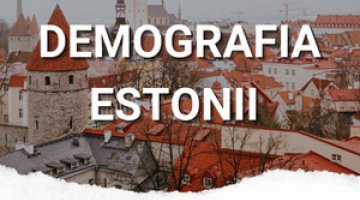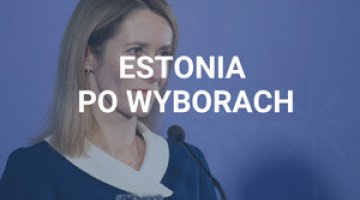The ruling centre-right wins the parliamentary election in Estonia
The parliamentary election held in Estonia on 6 March was won by the liberal Estonian Reform Party which also won four years ago. The party leader, Andrus Ansip, who has been Prime Minister for six years, will again undertake the formation of the government. The most likely candidate for the government will be the present coalition partner – the right-wing Union of Pro Patria and Res Publica of Mart Laar (third place in this election). Both parties of the ruling centre-right coalition were successful in the election despite a deep economic crisis that has been affecting the country for the last two years and a high unemployment rate. The electorate appreciated the government's restrictive financial policy that prevented Estonia from taking out foreign loans in the recession and facilitated the country's entry to the euro zone in January 2011. Prime Minister Ansip also used the Estonian electorate's susceptibility to nationalist slogans as the centre-right parties consolidated the voters around the topic of not letting the parties that represented the interests of the Russian minority (over 25% of the country's population) take over power.
The results of the election
The largest party in the Estonian Parliament (Riigikogu) will be the Estonian Reform Party which secured 33 out of 101 seats (two more in comparison with the previous parliament's term in office). The party that came third in the election, the Union of Pro Patria and Res Publica (23 seats, four additional seats), will probably form the coalition with the Reform Party. The Centre Party of the mayor of Tallinn Edgar Savisaar, supported mainly by the Russian minority, will be the largest opposition party with 26 seats (it lost three seats in comparison with the previous election). The pro-Western Social Democratic Party obtained 19 seats (nine additional seats), taking over a section of the voters of the Centre Party and benefiting from the votes of those who were dissatisfied with the government's policies.
The reasons for the centre-right's victory
Andrus Ansip will probably be re-elected as Prime Minister for the third time as he has been one of the most popular politicians in Estonia for several years. Social support for Ansip consolidated in 2007. Despite violent protests from the Russian minority that ended in riots in the capital and strong opposition from the Russian Federation, Ansip succeeded in moving the monument commemorating Soviet soldiers, the ‘Soldier of Bronze’, away from the centre of Tallinn. The dispute over this monument exacerbated the division in Estonian society on ethnic grounds and strengthened the trust that the part of the Estonian electorate susceptible to nationalist slogans had for Ansip.
In the time of the economic recession when in 2009 the GDP of Estonia fell by over 14% and revenues for the budget dramatically decreased, the government had to raise a host of taxes and significantly reduce the country's expenditure. At the same time Ansip pointed to Estonia's entry to the euro zone in 2011 as a positive objective of the government's austerity measures. It was also seen as the culmination of Estonia's integration with the EU and another step that separated the country from its Soviet past.
The Centre Party of Savisaar in political isolation
The Centre Party, supported mainly by Russians holding Estonian citizenship (approximately 150,000 people), will again be the largest opposition party. Altogether Russians represent over 25% (350,000 people) of the inhabitants of Estonia and 100,000 of them have Russian citizenship and another 100,000 hold the status of “non-citizen”. The “non-citizens” are permanent residents who did not automatically obtain Estonian citizenship after Estonia regained independence in 1991 and have not up to now decided or gone through the procedure of naturalisation but hold a special passport of “non-citizen” issued by the Estonian authorities that entitles them to vote in local elections and freely move in the Schengen zone. The Centre Party won the largest number of votes in Tallinn and Narva which have the greatest concentration of Russians and where Edgar Savisaar had the best results in the country, eclipsing even Prime Minister Ansip. President Toomas Hendrik Ilves and Prime Minister Ansip rule out the possibility of cooperation with Savisaar. In December 2010 the Estonian security police (KAPO) revealed materials that prove that Savisaar had asked Moscow to co-finance his party.
Promises and challenges for the next four years
With a gradual improvement in Estonia's economic situation – this year Estonia's GDP is forecast to grow by 4% - Ansip’s government will be withdrawing from some of the decisions taken during the recession, including increasing part of taxes and suspending part of contributions to the second pillar of the social insurance system. The Reform Party may also return to the promise made four years ago regarding a gradual decrease in the flat rate income tax (which now stands at 21%). One of the government's priorities aimed at building a positive image of Estonia in the world is ensuring access to broad-band Internet connections for all inhabitants of the country. According to the government's strategy, this is scheduled for 2015. Estonian politicians place their country in the group of Nordic states. Estonia will consistently strengthen cooperation with its main trading partner, Finland, and with the largest investor in Estonian economy, Sweden.





